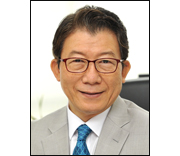-
[November 17, 2015 Korea times] Anatomy of transfer pricing
- Date : 2016.03.10
- Views : 322
Anatomy of transfer pricing
 |
By Jeffrey I. Kim
Currently 15,980 foreign companies are operating inKorea. While hiring workers and producing goods and services, foreign investorsencounter numerous difficulties and experience a variety of grievances. Oneparticular grievance brought to our attention is that they suffer from adiscrepancy between the value of imported goods assessed by the Korea CustomsService (KCS) and the value of the same goods calculated by the National TaxService (NTS). They request that the two prices be the same, but this is noteasy although not impossible.
Multinational enterprises (MNEs) engage in cross-bordertransferring of goods between affiliated companies. For this sort oftransaction, the parent company usually controls the transfer price which mayat times significantly deviate from a fair market value. They try to reducetheir overall tax liability to a minimum by using international double taxationagreements and other strategies. They keep their tax liabilities low inhigh-tax countries and high in low-tax countries.
Jerry Carter of Tax and International Finance at IDEXCorporation recently explained the ethical and practical aspects of transferpricing. He said if a company uses a fair market value as the transfer priceand pays lower taxes in another country, their transfer pricing is notviolating any ethical standards or laws. Foreign companies are required toprepare justifications and keep supporting documents on record for future use.This is because the parties involved may apply different definitions ormeasurements of fair market value.
Carter cited Japan and Australia as bad examples wherecompanies exercise an unfair transfer price. A Japanese company out of a senseof patriotism overcharged its Australian subsidiary so that it would pay moretaxes to Japan. That company ultimately paid the Australian government a 50million settlement. Similarly, a British pharmaceutical firm overcharged itsU.S. subsidiary for inventory and eventually paid $3.5 billion in penalties tothe Internal Revenue Service of the U.S.
When the transfer price is significantly above the fair value,the NTS tries to adjust it by applying the arm's length principle of the OECDGuidelines to ensure a fair market value. The OECD strongly recommends that thearm's length principle be used to determine the transfer price.
Similarly, the KCS checks the appropriateness of the transfer price,if it is significantly below the fair market value. Customs authorities usuallyfollow the WTO Customs Valuation Agreement which states that all importedarticles must be valued in accordance with one of five valuation methodologies:(1) transaction value; (2) transaction value of identical or similarmerchandise; (3) deductive value; (4) computed value; and (5) derivative value.This must be applied in sequential order.
Even though the OECD guidelines and the WTO Customs ValuationAgreements share similar goals, there are significant differences inapplication. The customs office inherently tends to overrate the transfer priceto maximize its tariff revenue whereas the national taxation office tends tounderrate the transfer price to maximize its profit tax revenue.
The OECD and the World Customs Organization have held jointinternational conferences to discuss various ways of reducing the discrepancybetween the customs value and the taxation value. It should be noted that afair market value is interpreted as a range of numbers rather than as a pointnumber, in order to provide some flexibility on which the different partiesinvolved can rely.
The convergence of the two values can be reached if thetransfer price is determined within the range of the fair market value. Thiscan be achieved if the parent company of an MNE enjoys a good reputation as apractitioner of fair transfer pricing.
If the transfer price is way out of the fair value, the KTS orthe NTS charges ex-post penalties to foreign-invested companies afteradjustments. This puts foreign companies in a difficult situation. Consequentlythe foreign company brings their grievances to the attention of the ForeignInvestment Ombudsman for settlement.
To resolve such grievances, the Ministry of Strategy andFinance has established the Tax Adjustment Review Committee for InternationalTrade Price. It went into operation on July 1, 2012. The committee made up bylawyers, CPAs, and tax specialists settles disputes over the appropriateness oftransfer prices.
Jeffrey I. Kim is the foreigninvestment ombudsman, a presidentially appointed troubleshooter for investorsand entrepreneurs from overseas. He earned his Ph.D. in economics at theUniversity of Chicago and has taught at the University of Colorado, Boulder,and Sungkyunkwan University.
Link : http://www.koreatimes.co.kr/www/news/opinon/2015/12/198_191083.html










